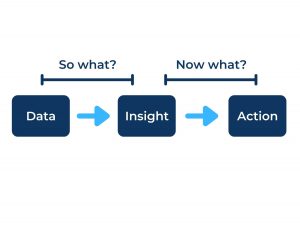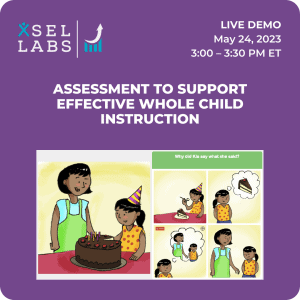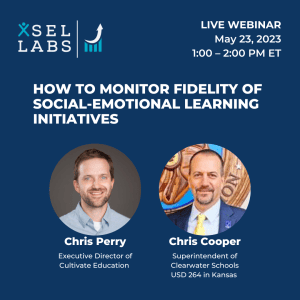The Problem
Educators use assessment data to guide instruction every single day. They formally and informally assess academic skills like reading and math, use the assessment results to gauge student level of competence, and fine-tune instruction to students’ current level of proficiency.
Here is the problem: When it comes to social and emotional learning, it can be harder for educators to use SEL assessment data to guide their social and emotional practice. But it is possible, and not that hard. This blog post will break down how to use SEL assessment data to guide your SEL practice.
We know that it can be done because we hear all the time about all the inspirational ways educators use social and emotional assessment data to make good things happen. For example, this case study describes how one of our partners used SEL assessment data to gain insights about student needs across several schools and used those insights to guide focused work measurably to improve specific competencies.
As we have seen many times among our partners, high-quality SEL assessment data can help educators understand their students and make wise decisions about what to teach to whom at what point. The question is, how? Well, in working with district partners, we have learned that two gaps need to be spanned for assessments to lead to action, as illustrated below:

See where this is going?
Gap 1: Between Data and Insight
Imagine you are using an SEL assessment. You get your assessment reports—that is the left-most box, “Data.” You are looking at tables of numbers and a bunch of graphs. For those numbers and graphs to lead to the second box, “Insight,” you need to be able to answer the question, “So what?” In other words, you have to know what the numbers and graphs mean about students, and you need to be able to articulate a story about students’ strengths and needs.
Gap 2: Between Insight and Action
Imagine you are spanning the data-to-insight gap. Insight is great, but insight is only useful if it inspires you to do something with what you have learned. The next gap falls between the insights you have gleaned from the assessment data and the actions you will take, based on the data, to support student development. To cross that gap, you will need to be able to answer the question “Now what”? In other words, you will need to know what actions—instructional strategies, curricular content, or intervention approach—you can take to move students from their current level of social and emotional competence to the next level.
What happens if these gaps do not get crossed? If data do not yield insight, assessment is just another cost and waste of time. Absent some useful information from the data, assessment cannot do any good. If those insights do not help guide action, this can be the source of frustration, as educators may say to themselves, “I know my students need to work on [INSERT SKILL HERE], but I don’t know how to teach that skill.”
Bridging the Gap
One of the trickiest parts about crossing those bridges is that educators have wide-ranging levels of comfort and familiarity with interpreting non-academic assessments to guide instruction. For some educators, the gaps between data and insight and between insight and action are small cracks in the sidewalk that they can overcome independently.
For others, the gap can seem like the Grand Canyon. The xSEL Labs teams have worked closely with educators in many districts large and small and have found that it does not take much guidance for most educators to be able to start crossing those gaps with ease. That is why we routinely offer data review workshops as part of our work with school districts, why we have convened cross-district professional learning communities to share wisdom about using data to guide action, and why we partner with curriculum providers to help districts use our assessments to support the effective use of those curricula.
It is also why we offer free resources to help educators span both gaps—here is a downloadable data review worksheet, for example, that can aid in data interpretation and planning. And here are program alignments that help show the relationship between what our assessments are designed to measure and the content of a large number of SEL curricula. This blog post talks more about aligning assessments and programs.
It is also why we will be hosting a series of webinars in which educators, curriculum providers, and we share practical lessons about how to span the two gaps between social and emotional assessment data and effective, and data-informed SEL practice. We hope to see you there!
In the meantime, if we can help you use SEL assessment data to foster insight and effective practice, let us know. We would love to share how we support our partners to get the most out of their SEL assessment.



